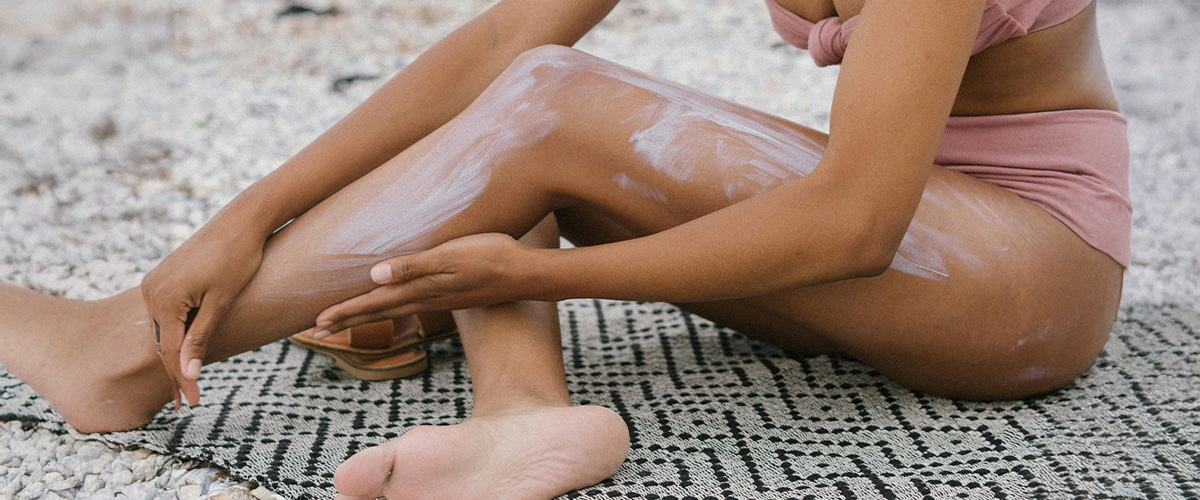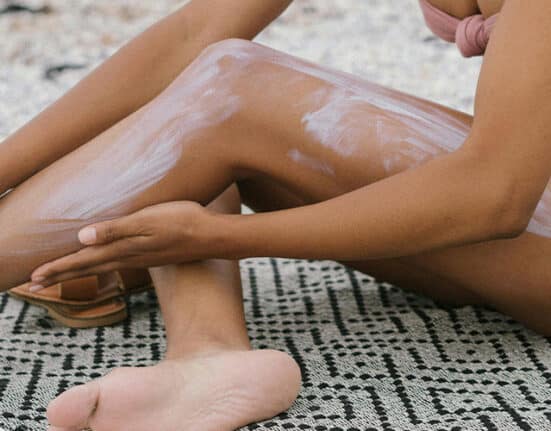WE love going to the beach! And now that dry season is here, we have more reasons to be in our swimsuits and bathe in the sun by the sea.
While that sounds fun and Instagrammable, the sun is actually one of the many reasons for premature skin aging or worse skin cancer.
And the best – and easiest – way to protect our skin from the harmful rays of the sun is by using sunscreen.
With so many sunscreen products in the market, for sure many are confused as to which one is the best.
Don’t worry as republicasia’s got your back. Here are some tips that can help you when choosing your sunscreen, taking into consideration your skin type and needs.
By formulation
Sunscreen Lotion
The most common type of sunscreen available in malls, health and beauty retailers, even convenience stores are the lotion kind; meaning they have a range of consistency from watery to creamy, often coming from tubes, either pumped or squeezed and spread on the skin manually.
Sunscreen Stick
Reapplying sunscreen is necessary to keep us protected against UVA and UVB rays of the sun. But sometimes, it can be a hassle.
Good thing there are sunscreens that come in a stick form. These are solid retractable products that you can glide onto your skin effortlessly, sans the hand spreading.
Sunscreen Spray
Another convenient way to reapply sunscreen is with spray on ones. These come in liquid form and stored in bottles with nozzles.
However, many do not prefer sunscreen sprays because of how uneven the application may be, especially those that come from aerosol bottles.
Tinted Sunscreen
For makeup users, sunscreen is an additional layer on the face that can leave a feeling of heaviness on the face. But not with tinted sunscreens that can act as the makeup base.
These products are like the lotion type but with skin tone pigments. However, an issue many encounter with tinted sunscreens is the limited shade range, currently only catering to fair skinned people.
Another issue faced by users is how some tinted sunscreens are difficult to blend, with sometimes the pigment separating from the rest of the product.
Sunscreen Powder
A product up for debate at the moment are sunscreen powders. As the name suggests, these come in powder form. The reason why its efficacy is being contested is because of how powders are usually applied on the face in a thin layer which does not give maximum sun protection.
Others suggest applying powder sunscreen on top of regular or tinted sunscreen to provide additional protection and mattifying effect.
By skin type
Normal skin type
Since those with normal skin type do not have much to fuss about, they can use almost any sunscreen available.
But a factor you can consider in choosing is the weather. If it is cold, you can opt for a more creamy texture to keep your skin moisturized. Lightweight sunscreen, on the other hand, can feel very comfortable during hot days.
Oily and acne-prone skin type
Clogged pores and excess sebum cause acne, which is why it is important to look for oil-free and non-comedogenic sunscreens if you already have oily skin. Gel type of formula is nice to use since it does not leave a heavy feeling on the face.
Dry skin type
Sunscreen with hydrating ingredients like glycerin and hyaluronic acid and moisturizing ingredients like ceramides are best for people with dry skin as it gives UV protection while simultaneously sealing moisture on the skin.
Sensitive skin type
Keeping the ingredients list short is key for people with sensitive skin type as additional and unnecessary ingredients can cause irritation. Which is why sunscreens formulated to be hypoallergenic with no fragrance, and in some cases even without parabens, are recommended for sensitive skin.
By type of protection
Chemical sunscreen
Chemical sunscreens are formulated using chemical filters that absorb UV radiation, convert it to heat, then release it through the skin.
While chemical sunscreens are often thinner in consistency, making them easier to apply, some people are sensitive to the ingredients used which can cause irritation.
Environmentalists are also concerned that the filters used in chemical sunscreens can damage marine ecosystems, particularly causing coral bleaching.
Mineral or physical sunscreen
As an alternative, physical sunscreens form a barrier on the skin that reflects or scatters the sun’s harmful rays.
The ingredients used in mineral sunscreens are gentler on the skin and are considered reef-friendly. However, these often leave white cast on the skin and may feel heavy especially on warm days.
Skin care experts say that the best sunscreen is the one you actually use. But it is also important to make your relationship with sunscreen a comfortable one.
Just always remember that when using sunscreen, use the two-finger rule!
How useful was this post?
Click on a star to rate it!
Average rating 5 / 5. Vote count: 2
No votes so far! Be the first to rate this post.
We are sorry that this post was not useful for you!
Let us improve this post!
Tell us how we can improve this post?








